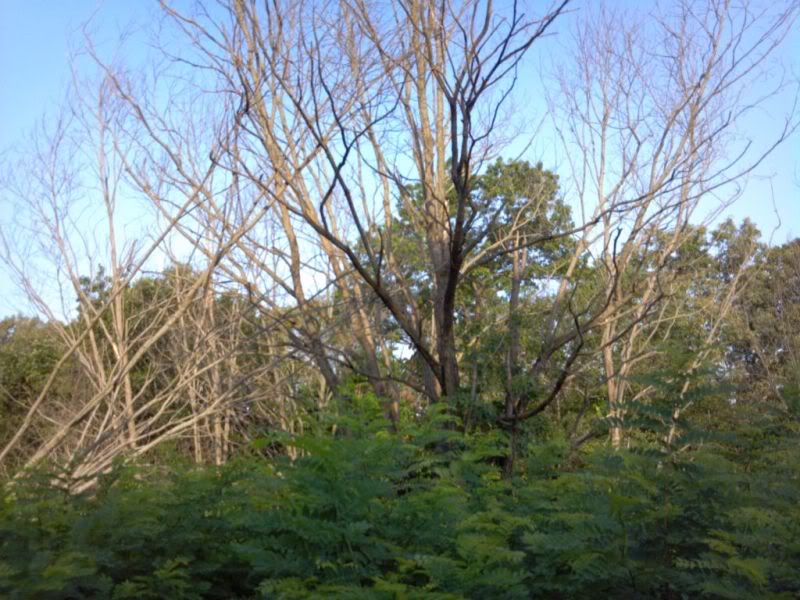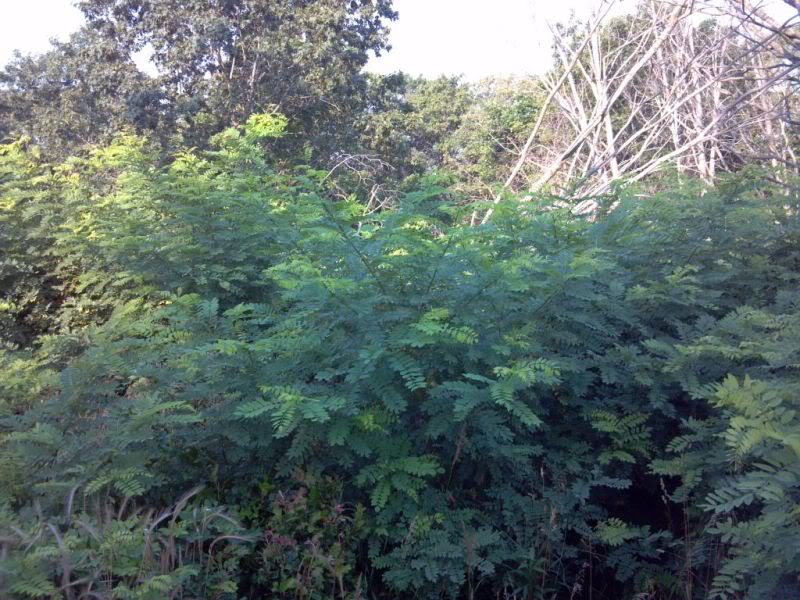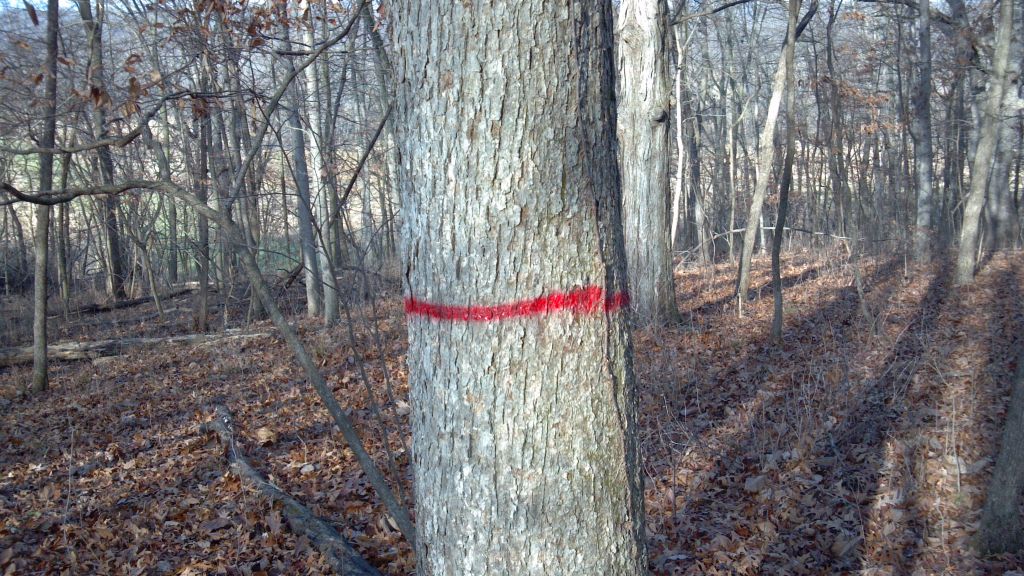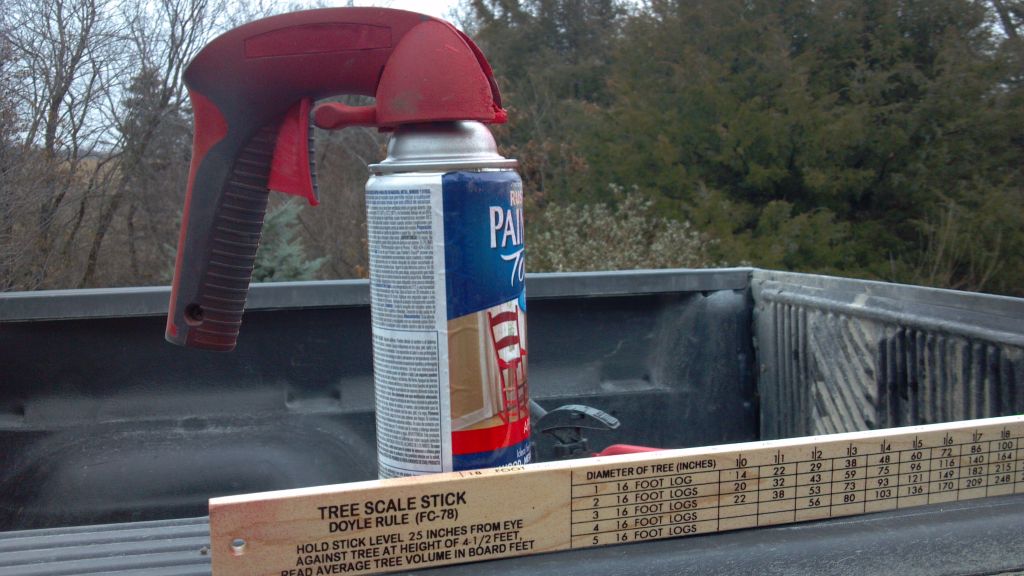Timber Management
It's that time of year, at least for me as I make the lion's share of my living working in the timber during the winter months. Timber is usually one of our greatest yet most oft over looked resources both for whitetails and from an investment perspective that adds to the value of our property. Many landowners concentrate completely on planted food sources and totally overlook their timber resources assuming that because they have trees...that's good enough but nothing could be farther from the truth.
Timbered areas vary vastly by species, quality and quantity often within a one mile radius so imagine the difference across our nation!! Mine may be nothing like yours and yours not even remotely like a landowner in Maine, Texas or Wisconsin so please be cautious about taking advice from well intentioned landowners who do not have the training nor experience to advise others. It is up to you as a landowner to learn as much as you can about your timber, first by getting a state forester involved (or hiring a private one) to walk your timber with you. Their goals will often be vastly different then yours but there is still much to be learned from their expertise including if you have any marketable timber.
There are many options for managing timber resources but generally there are three that we utilize most in working with hardwood timber. Harvest, crop tree release and weed tree removal....
Harvest
If we have marketable timber and the market is right, doing so will immediately open up canopy allowing for greatly increased understory (brushy, shrubby growth that provides bedding and browse) as well as providing some financial rewards. Almost all timber has some value even if only for pallet wood or fire wood so the first step is determining what if any harvest size timber we have on our property. Like a stockbroker helps us with financial investing a forester can help us in regards to doing a timber harvest including recommending reputable timber buyers/loggers.
Weed Tree Removal
Where are few if any crop trees (in our area oaks and walnuts) we often do a weed tree removal where virtually every tree is killed or felled in some cases using hinging techniques. If no crop trees are present we may go in and hand plant seedlings to get desirable species in any area where there were none previously.
Don Higgins recently had a great article in
Quality Whitetails called
"The Alternative to Hinging" in which he did what we call a weed tree removal and he followed up with a tree planting. The resulting re-growth is usually phenomenal and the areas turn into a fantastic bedding area within 2-3 years. I have done some variation to what Don did on several projects including some of my own with outstanding results but again, this is not a viable option in every timber.
If you find that you have almost no oaks or walnuts and would like to change that I would encourage you to consider some variation of a WTR and Don's article could give you some things to think about.
Crop Tree Release
In most of southern Iowa and northern Missouri where we have an oak/hickory hardwood species scenario a crop tree release is the customary way to both improve our timber and at the same time encourage some understory growth. I typically do 300-400 acres of this type of work each winter which means I have not only seen a lot of timber but a lot of very different types and species of timber, this in turn gives me a unique perspective to both timber and whitetail management that the average landowner is not privy too.
The most common habitat management problem I encounter when I tour a landowners farm is a wide open timber and that type of timber holds very few deer, not only that but it provides virtually nothing in the way of browse. Crowded timber has such a dense canopy that trees compete for light and growth is slowed and understory is non-existent...much like this timber where I have recently start a CTR
Here is nothing appealing to whitetails in this type of environment yet unlike Don's situation there are plenty of very valuable crop trees which when released will not only grow faster and yield up to 7X's more mast but also allow for new understory growth that whitetails love!
In this case, cost share is involved and a forest stewardship plan written that must be followed and that requires marking the crop trees and doing an inventory by size.
Generally we shoot for a 4 sided release meaning competing trees on all four sides are killed (competing means competing canopy not
every tree near the crop tree. In many cases however there may be 2-3 crop trees together that as a group can be released by killing weed trees (trees with little or no value depending on the market etc.) such as ash, hickory, elm etc.
In this pic there is a black walnut, a white oak and a red oak....none of which were killed because I released the entire group by killing surrounding competition
As mentioned the the type, quality and quantity of crop trees will vary widely so these are only general thoughts based on what I encounter in my area but usually walnut and white oak would be considered high value species with red oak next in line. Every walnut however will not be a valuable crop tree...those grown in rich bottomlands are often very valuable while those grown on poor upland soils...not so much. Trees can also be damaged by a multitude of things and in this case I chose the red oak in the foreground over the severely damaged black walnut in the background
Here is an example of a very low value white oak....that doesn't mean it has to be killed only that it could be if in turn it would release better quality trees.
Example of a severely deformed black walnut that will likely have little if any value
Choosing crop trees often requires a great deal of thought because while they may look the same at ground level...
It is the canopy that often is the deciding factor on which to kill or choose as a crop tree. Full crowned trees versus those with deformed partial crowns are key factors in choosing which to release
A single white oak surrounded by hickory and elm is a no brainer but a group of "peas in a pod" oaks is quite another and situations like this are not for the novice. If you have valuable crop trees but prefer to do your own release you may want to at least hire the marking done. Most landowners have neither the time nor training for crop tree release in which case your forester may recommend a competent contractor to do the work which in our area typically runs $160 an acre a portion of which may be recouped via cost share.
A group of white oaks such as these will some day be very valuable but they will reach that stage much sooner if the poorest tree/trees in the group are...culled...
Regardless of how many acres of timber I work on, I always encounter something new...what at first appears to be a white oak...
is in fact a Chinkapin oak....somewhat rare in my neck of the woods....
In most cases the large weed trees are killed by double girdling while small trees may be felled in which case I usually hinge them...
Timber management then allows us to use several options or combinations thereof to vastly improve out timber resources while at the same time make significant habitat improvements that allow us to hold more whitetails then previously was possible.
We may clear cut or select cut our timber at harvest time, we may need to do a radical tree removal and start over or just thin some crop trees such as when we encounter a pure stand of oaks. Knowing this be cautious of from whom you take advice but rather use your own due diligence to research your options, listen to your forester and then based on your personal goals..decide what is best for you.
Hinging some weed trees is an option for both weed tree and crop tree release but that option is not for everyone nor suitable in every timber, where possible however...putting some lumber on the ground can make over night changes toward our goals of increasing bedding and browse and a topic for another discussion....
























